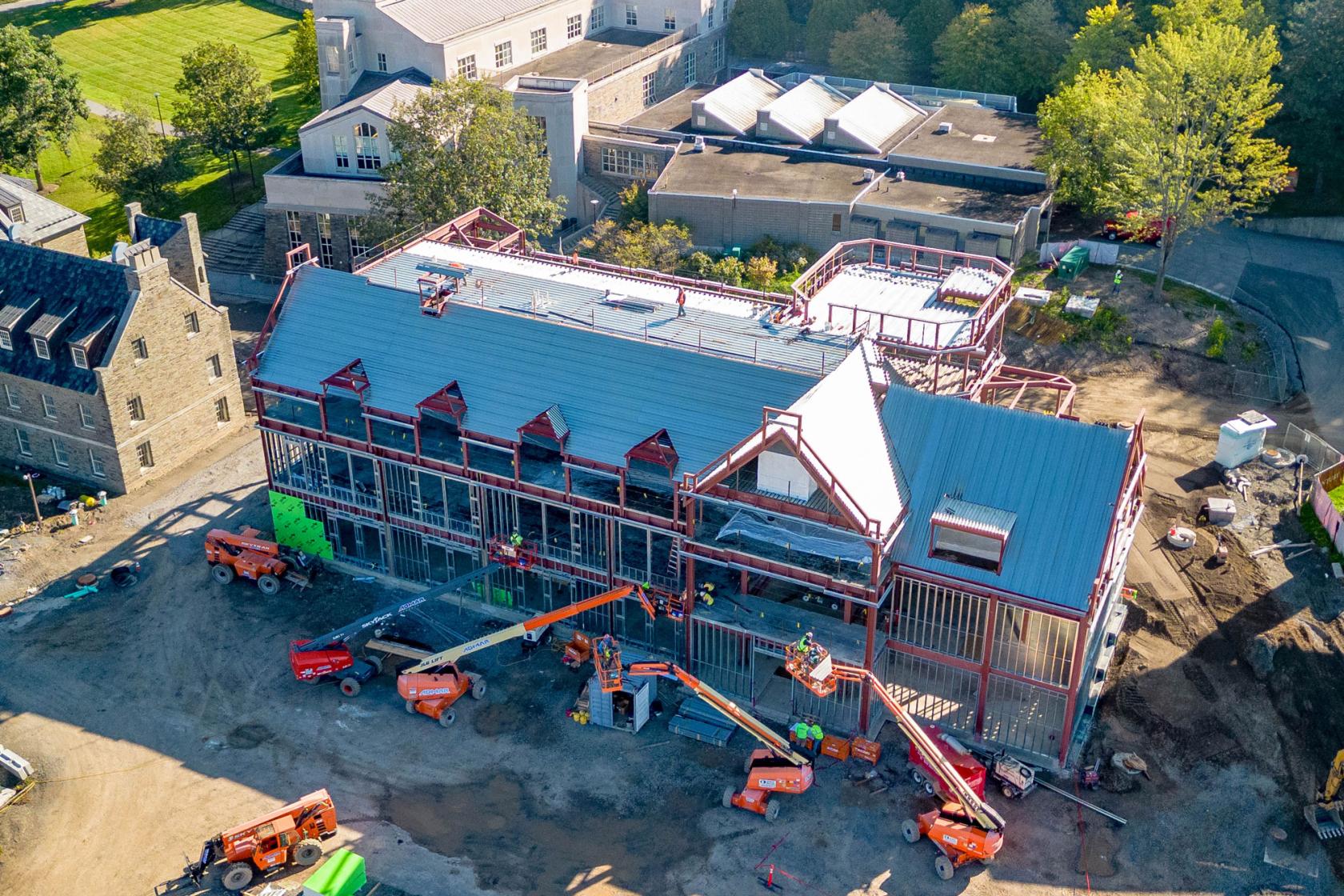Massive steel girders surrounded by scaffolding and shadowed by mammoth cranes are easily viewable to any passing motorist on 12B in Hamilton. But that work is a small snapshot of the many construction and renovation projects now underway, or recently completed, on the campus of Colgate University.
Take a small glimpse into the status of these projects and learn a little about some of the college’s future plans as Colgate strives to cement its place as a leading American liberal arts college for the century ahead.
Benton Center for Creativity and Innovation

As Colgate works to construct the first buildings set forth in its ambitious Third-Century Plan, it is easy to see the future Benton Center for Creativity and Innovation as it is starting to take shape, situated between James C. Colgate Hall and the Dana Arts Center.
Foundation and steel work are largely finished and the building is now being enclosed for a long winter of interior work ahead.
It was a busy summer for the crew working on the building, says Senior Project Manager Jason Miner. More than 90% of the utilities for the building were installed, and in early September, crews began drilling the 30 geothermal wells that will be part of the building’s sustainable heating and cooling system.
Throughout the rest of the fall, the crew will pour the concrete decks for each floor and complete work on the utilities that service the building. Passersby will notice that exterior wall framing has begun, and masons are busy laying the Benton Center’s blue stone veneer to match nearby buildings on upper campus.
“We need to get the building enclosed so pipes can be installed, wires run, and to allow us to continue at a good pace during the winter,” Miner says.
The goal, says Miner, is to complete construction by June 2024 and begin moving furniture and equipment into the building during the summer months.
For Aaron Gember-Jacobson, associate professor of computer science and department chair, the new facility’s most exciting feature is simply its size: Benton Center will feature twice as many lab classrooms as the computer science department’s current space in McGregory Hall.
“Having more labs will allow us to make some of these spaces accessible to students outside of class during the day, whereas our current lab spaces are booked solid with courses every weekday and only accessible to students in the evenings and weekends,” Gember-Jacobson says.
Gember-Jacobson is also eager to explore the many opportunities for cross-departmental collaboration among the building’s neighboring departments.
“I expect the co-location of film and media studies and computer science in the Benton Center — with close proximity to the art, theater, and music departments — will further increase the number of courses that connect computer science and the arts and humanities,” he says.
The Robert H.N. Ho Mind, Brain, and Behavior Center at Olin Hall
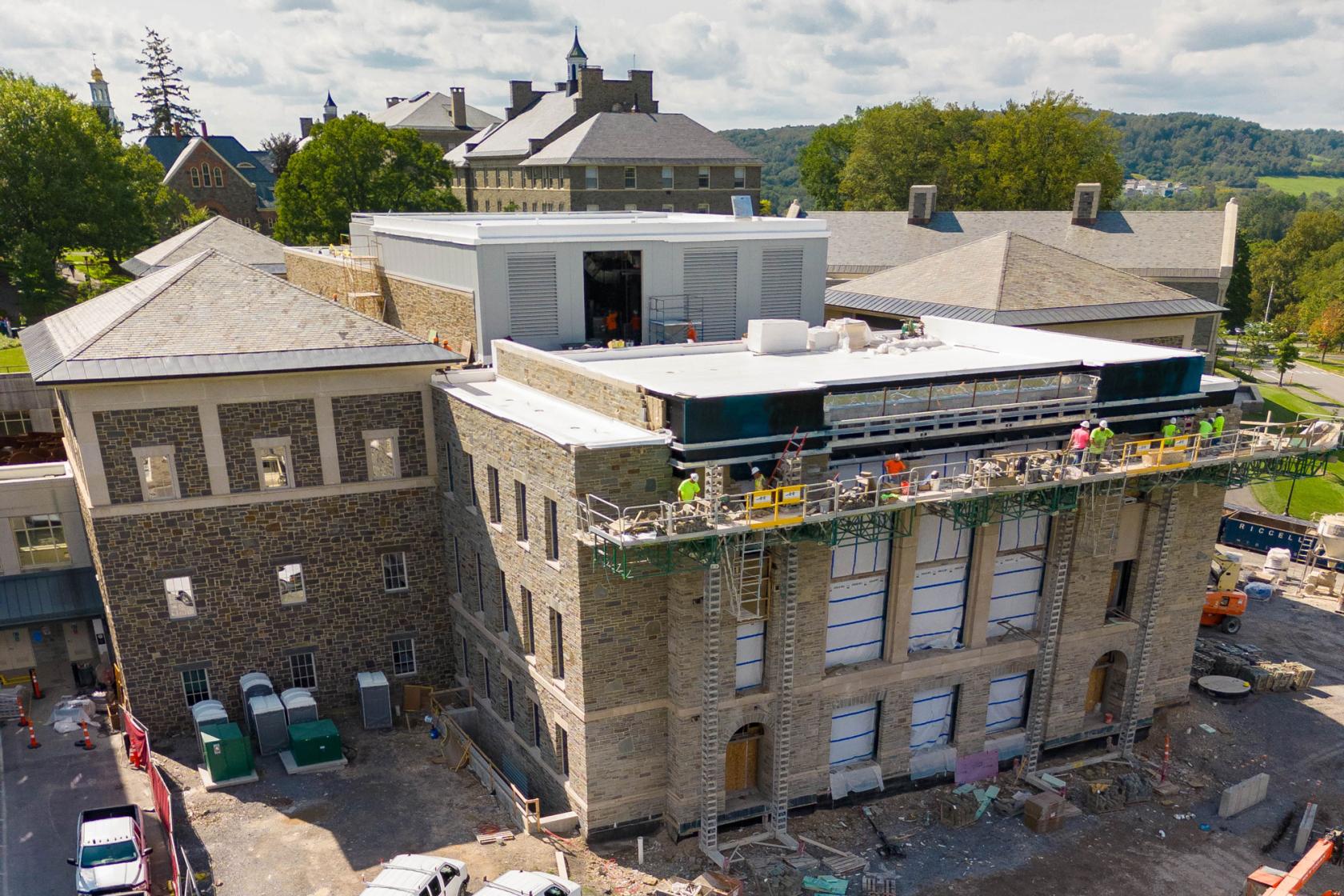
For anyone heading out of the village on Hamilton Street, it’s now easy to see the new stonework of a radically expanded Olin Hall. Colgate’s largest academic building, Olin Hall is undergoing a 20,000 sq. ft. addition and renovations to the current 100,000 sq.ft. building. Project Manager Joe Inman says construction is on track for completion in early 2024.
Framing on the interior of the building’s expansion is complete, and over the summer, the roof was installed. The crew is installing sheet rock during the month of September along with the stone facade on the exterior, activity that will continue through November.
More than 85% of mechanical systems were completed during the summer, including duct work and sprinkler systems, says Inman. In the existing part of the building, framing has been completed, older windows replaced, and asbestos was removed after crews discovered the substance in May.
“The asbestos abatement work set us back, but only by a couple months,” says Inman. “Faculty and staff are spread out all over campus during the renovation, so I know they’re eager to get back into Olin to continue their research and teaching in their own building,” he says.
Oak Drive Renewal and Sidewalks
Thirty-five new oak trees have been planted to infill gaps in the historic entryway to Colgate’s campus along Oak Drive. These new trees replace those oaks that had died or were dying. An additional 34 trees will be planted to complete the tree-lined effect along Oak Drive and College Street.
In an effort to improve walking routes to and from the village to campus, more than 2,000 linear feet of new sidewalks and granite curbing were added to campus this summer, extending along the north side of Oak Drive, from Hamilton Street southeast to Merrill House — and along the south side of College Street, from Case Geyer Library to and around James B. Colgate Hall. New lighting was also added to the flagpole in front of James. B. Colgate Hall.
The Clearing
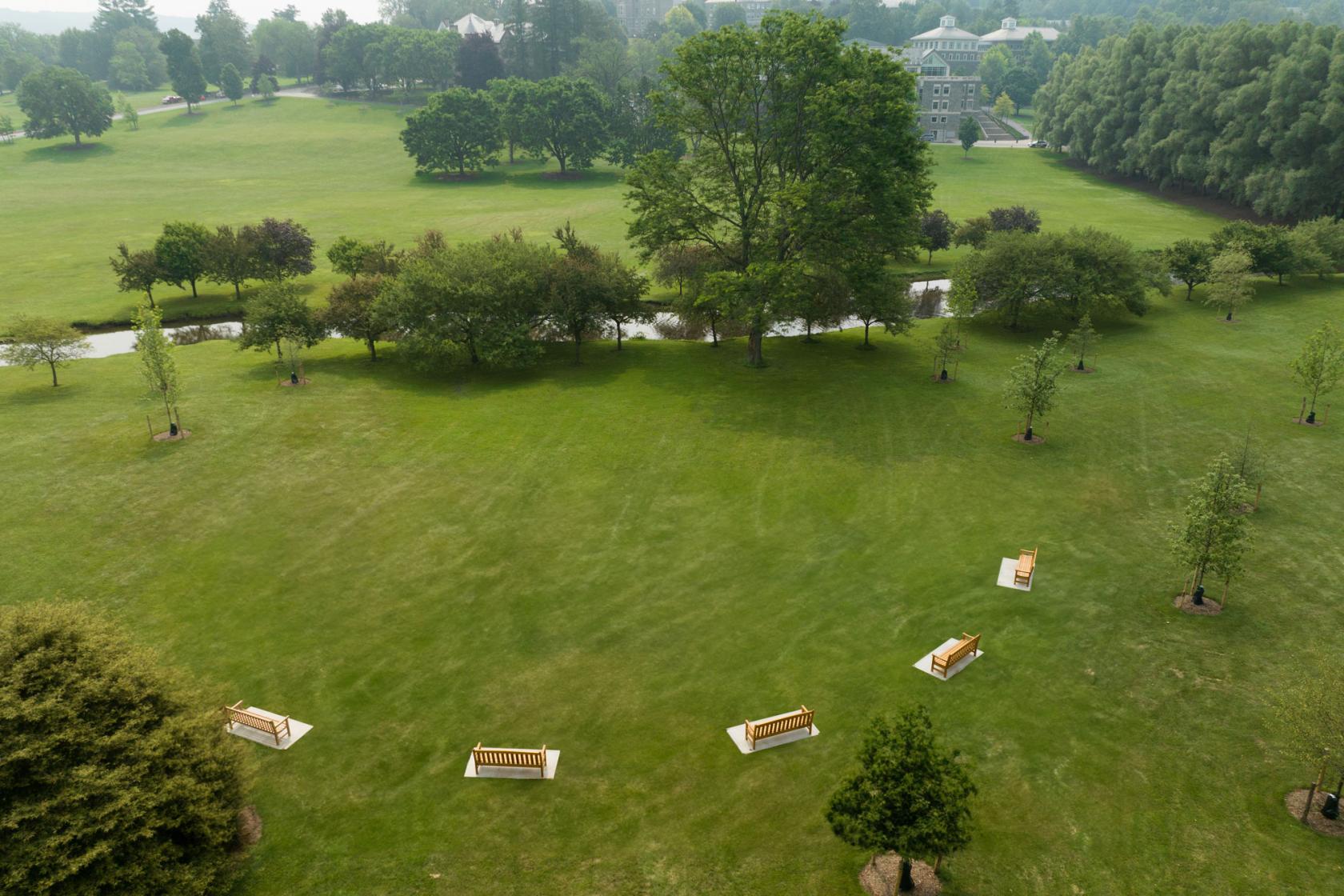
As part of the Third-Century Plan’s focus on sustainability and campus beautification, the University recently removed several oak trees, which had reached the end of their lifespan, from Oak Drive in an effort to renew the iconic entrance to campus. One of those trees was the site of the November 2000 car crash that took the lives of four young people, including Colgate student Katie Almeter.
Members of the Colgate community gathered on Tuesday, Aug. 15, 2023, for the dedication of the Clearing, a new outdoor space formed by an arc of trees, carefully planted and spaced along a bend in Payne Creek as it winds toward Taylor lake. In building the Clearing, landscape architects included four new benches, made with wood reclaimed from that tree, as a tribute to the memory of those lost in the accident. Within the Clearing, visitors will be able to enjoy a sweeping view of campus.
Chapel House Landscaping
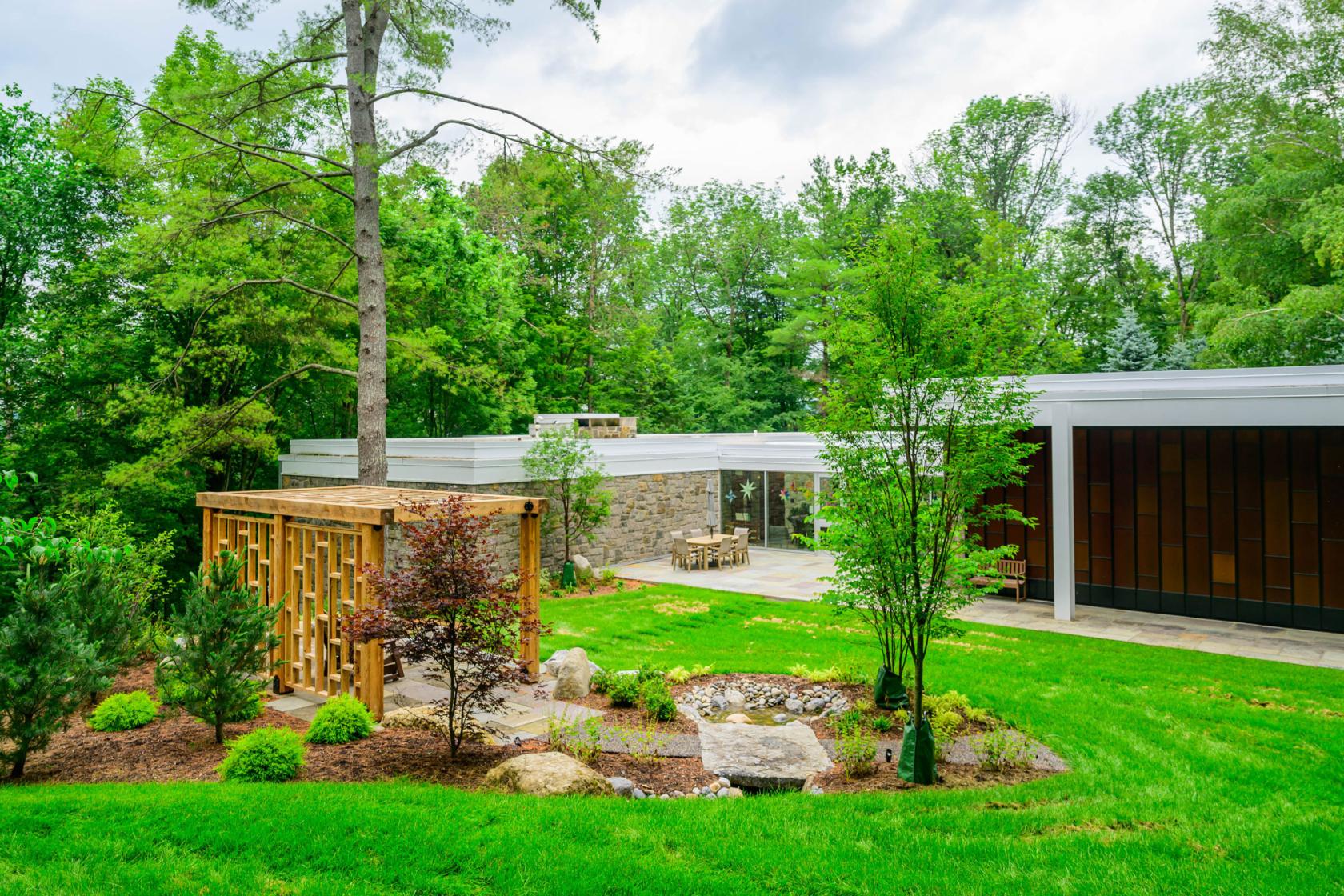
A new meditation garden now awaits visitors at Chapel House. Completed on June 1 and designed with Japanese zen garden principles that complement the mid-century modern building architecture, this space creates a new outdoor area for meditation amid the surrounding forest.
The larch pergola structure was constructed with locally harvested timber, and the boulders (Sanzon-Seki: three sacred stones) were sourced during foundation work at the other construction sites on campus and hauled to the site. Bluestone patio pavers were reclaimed from previous construction work, and the site is ADA accessible via a gravel-lok pathway and lawn area that extends flush to the building patio.
New Parking Downtown
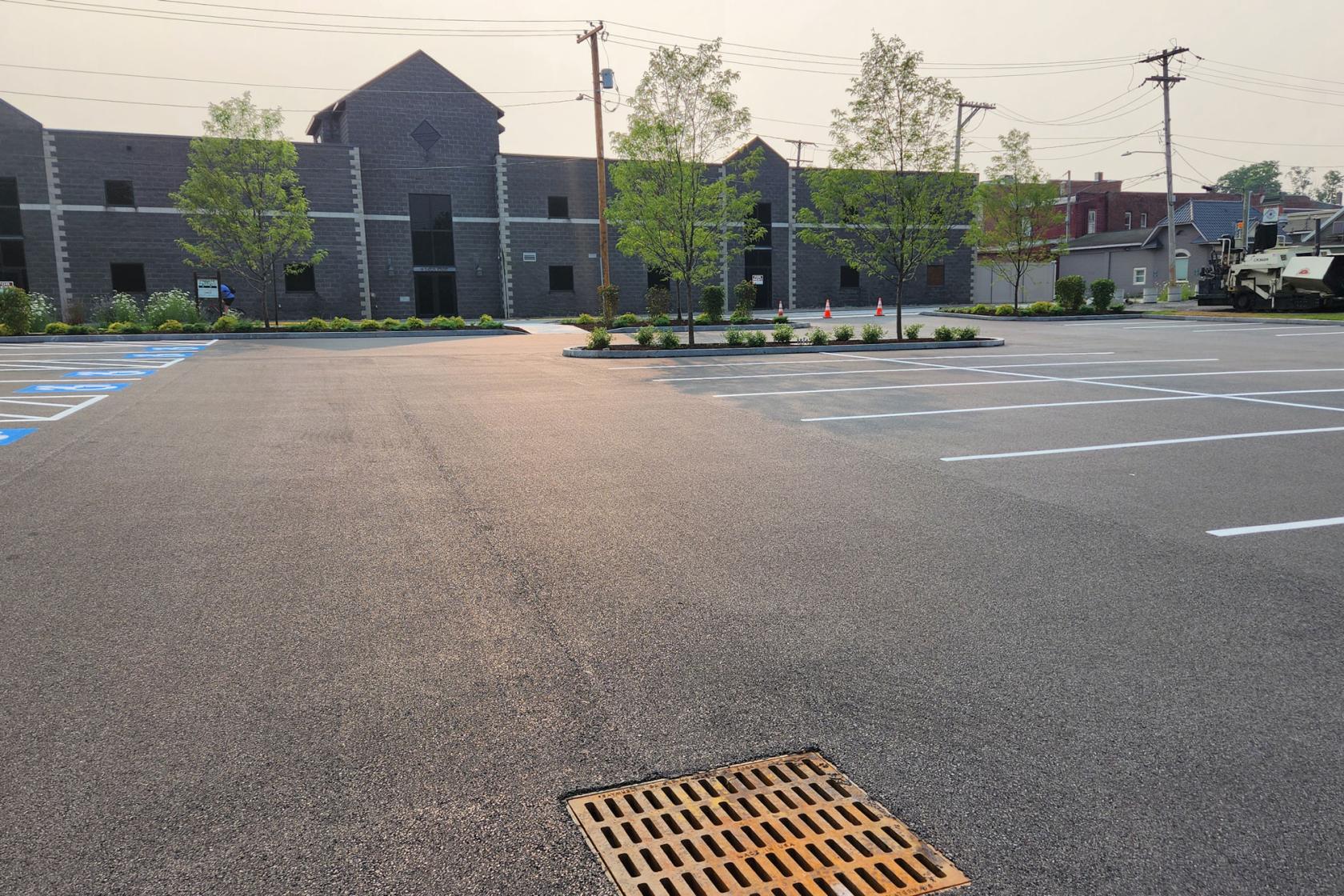
The former site of Wayne’s Market has undergone a complete transformation with the addition of 112 new parking spaces, 22 new trees, and four designated electric vehicle charging spaces. This new parking lot includes a subsurface stormwater storage system to help reduce runoff and to help with mitigating flooding issues in the neighborhood. New energy efficient lighting is being added to the site in September.
The parking lot is open to the public, however overnight parking is not allowed, and some spaces are leased for use by clients of the nearby dialysis center.
